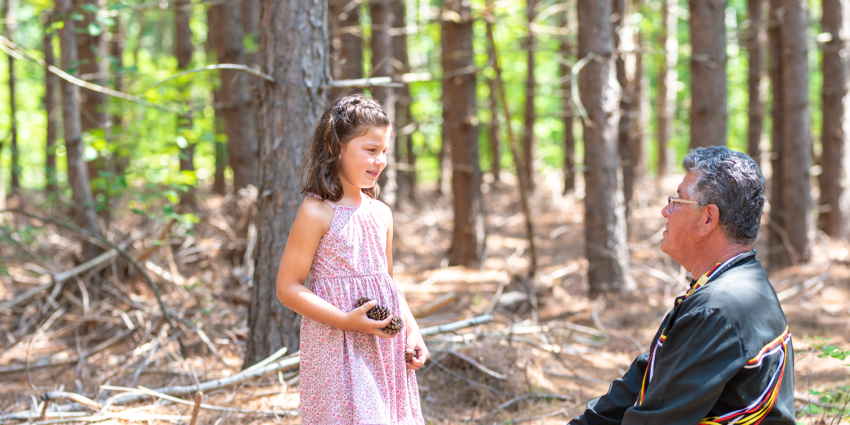Aboriginal & Treaty Rights
Foundational Terms
Aboriginal and Treaty Rights are complex. Understanding the terms connected to these rights will help all Islanders set a course for a brighter future together.
- Aboriginal Rights
Aboriginal rights are collective rights which flow from Aboriginal peoples continued use and occupation of their traditional territories. Aboriginal rights are inherent rights which Aboriginal peoples have practiced and enjoyed since before European contact. Aboriginal rights may vary between Aboriginal groups but in general they include rights to the land, rights to subsistence resources and activities, the right to self-determination and self-government, and the right to practice one’s own culture and customs including language and religion.
In the legal test to claim Aboriginal rights, the practice, custom or tradition must be shown to have existed prior to European contact. Additionally, the practice, custom or tradition must still have existed in 1982 when the Constitution was patriated.
The courts have also said that constitutionally recognized practices, customs or traditions can evolve to a modern form. For example, the courts have recognized that fishing for food, social and ceremonial purposes is a right that has evolved from harvesting by hand using nets or spears to modern fishing equipment and boats.
In the Supreme Court of Canada decision R. v. Van der Peet, Chief Justice Lamer described Aboriginal rights as follows:
“The doctrine of Aboriginal rights exists… because of one simple fact: when Europeans arrived in North America, Aboriginal peoples were already here, living in communities on the land, and participating in distinctive cultures, as they had done for centuries. It is this fact, and this fact above all others, which separates Aboriginal peoples from all other minority groups in Canadian society and which mandates their special legal status.”
- Treaty Rights
Treaties are legally binding agreements that set out the rights, responsibilities and relationships of Indigenous Nations and the Crown (federal and provincial governments). They form the basis of the relationship between Indigenous and non-Indigenous people. Although many treaties were signed more than a century ago, treaty commitments are just as valid today as they were then. Treaty rights are entrenched in s. 35 of the Constitution Act, 1982
Historic Treaties
Starting in 1701 in the British colonies of North America (these would later become parts of Canada), the British Crown entered into treaties with Indigenous groups to support peaceful economic and military relations. The Crown refers to the British and later Canadian governments: federal, provincial and territorial.
Over the next two hundred years, the Crown signed treaties that defined the respective rights of Indigenous peoples and European newcomers to use the North American lands and resources that Indigenous peoples traditionally used and occupied. The historic treaties signed after 1763 provided large areas of land, occupied by First Nations, to the Crown (transferring their Aboriginal title to the Crown) in exchange for reserve lands and other benefits.
Unlike the historic treaties signed after 1763, the Peace and Friendship Treaties between the British Crown and the Mi’kmaq, Maliseet and Passamaquoddy in the maritime provinces (and parts of Quebec and Maine) did not cede or transfer Aboriginal title of the land to the Crown.
The Peace and Friendship treaties were concluded between 1725 and 1760/61 and they all followed a similar pattern. The treaties signed during this period are referred to as a covenant chain of treaties. Their terms simply re-established peace and commercial relations. In these treaties, the Aboriginal peoples did not surrender rights to land or resources. Two of the treaties have a specific trade related clause not found in the others, known as the “Truck House” clause. In the 1752 and 1760-1761 Peace and Friendship treaties the British promised to establish a truck house, or trading post, for the exclusive use of the Aboriginal signatories. As one of the primary purposes of the treaties was to re-establish trade within the colony, these “truck houses” would serve to encourage a commercial relationship between the Mi’kmaq, the Maliseet, the Passamaquoddy, and British settlers. While the actual trading posts were short lived, the Truck house clause became the central focus of the Marshall decision in 1999 where the Supreme Court of Canada found that the Treaties remained valid and Donald Marshall Jr. therefore had the right to fish, hunt and gather in pursuit of a moderate livelihood pursuant to the treaty right.
Modern treaties
Historic treaties have only addressed a portion of Aboriginal rights to land across Canada. Land and resource-related negotiations are still underway in parts of the country where treaties were not signed.
The modern treaty era began in 1973 after the Supreme Court of Canada decision in Calder, which recognized Aboriginal rights for the first time. This decision led to the development of the government of Canada’s Comprehensive Land Claims Policy and the first modern treaty – the James Bay and Northern Quebec Agreement in 1975.
Since 1975, Canada has signed 25 additional treaties (called modern treaties or comprehensive land claim agreements) with Indigenous groups in Canada. Some of these treaties include self-government.
Over the past four decades, Canada’s approach to treaty negotiations has evolved as a result of developments in Indigenous law, joint innovations at negotiating tables and past engagement with Indigenous groups and key stakeholders.
The process of treaty-making in Canada is continuing to evolve through ongoing engagement, dialogue and negotiations with Indigenous groups.
* Definition adapted in part from cirnac.gc.ca
- Self Governance
Indigenous peoples practiced their own forms of government for thousands of years before the arrival of European and other settlers in what is today Canada. These forms of government reflected the economic, social and geographic diversity of Indigenous peoples, as well as their cultural practices and spiritual beliefs. Indigenous self-government is recognized as an inherent right of Indigenous Nations in Canada.
Indigenous self-government is the formal structure through which Indigenous communities may control the administration of their people, land, resources and related programs and policies.
Early partnerships between colonial governments with Indigenous nations were forged through treaties, trade and military alliances. Over many centuries, these relationships were eroded by successive laws, policies and decisions that were based on a colonial and paternalistic approach. This includes the Indian Act, which was passed in 1876 and continues to determine how most First Nations in Canada are governed to this day. The Indian Act imposed a colonial governance system on First Nation communities where authority rested with the federal Minister.
There is now an attempt at reconciliation between Indigenous and non-Indigenous peoples. It is a necessary process intended to address a long history of colonialism and the damage it has caused. The goal is to renew the nation-to-nation and government-to-government relationship with Indigenous peoples.
The goal is to work in partnership with Indigenous peoples to undo federally imposed systems of governance and administration in favour of Indigenous control and delivery. The process involves supporting Indigenous peoples in their work to rebuild and reconstitute their nations, advance self-determination and, for First Nations, facilitate the transition away from the Indian Act and toward self-government.
Indigenous self-determination is a fundamental Indigenous right and principle of international law, as set out in the United Nations Declaration on the Rights of Indigenous Peoples.
- Section 35
Constitution Act, 1982 Section 35
Section 35 is the part of the Constitution Act, 1982 that recognizes and affirms Aboriginal and treaty rights. The Canadian government did not initially plan to include Aboriginal rights so extensively within the constitution when the Act was being drafted in the early 1980s. Early drafts and discussions during the patriation of the Canadian Constitution did not include any recognition of those existing rights and relationships, but through campaigns and demonstrations, Aboriginal groups in Canada successfully fought to have their rights enshrined and protected.
It is important to understand that Section 35 recognizes Aboriginal rights but did not create them—Aboriginal and treaty rights existed before Section 35.
Section 35 of the Constitution Act states:
- (1) The existing aboriginal and treaty rights of the aboriginal peoples of Canada are hereby recognized and affirmed.
(2) In this Act, “aboriginal peoples of Canada” includes the Indian, Inuit and Métis peoples of Canada.
(3) For greater certainty, in subsection (1) “treaty rights” includes rights that now exist by way of land claims agreements or may be so acquired.
(4) Notwithstanding any other provision of this Act, the aboriginal and treaty rights referred to in subsection (1) are guaranteed equally to male and female persons.
Section 35 of The Constitution Act, 1982 recognizes and affirms existing Aboriginal and treaty rights, but does not define them. What Aboriginal rights include has been the topic of much debate and discussion, and they have been defined over time through numerous Supreme Court of Canada cases, as have specific treaty rights.
Section 35 also recognizes that Aboriginal rights are “existing.” The Supreme Court of Canada has stated that this means that any Aboriginal rights that had been extinguished by treaty or other legal processes prior to 1982 no longer existed and therefore are not protected under the Constitution. The significance of the term “existing” was further clarified in the case of R. v. Sparrow:
“Section 35(1) applies to rights in existence when the Constitution Act, 1982 came into effect; it does not revive extinguished rights. An existing aboriginal right cannot be read so as to incorporate the specific manner in which it was regulated before 1982. The phrase “existing aboriginal rights” must be interpreted flexibly so as to permit their evolution over time.”
The existing rights of the Aboriginal people of Canada are recognized by s. 35 of the Constitution Act 1982 and that recognition has been further defined through various Court decisions. Section 35 defines Aboriginal as Indian, Inuit and Métis.
Section 35 falls outside of the Charter of Rights and Freedoms, and it begins Part II of the constitution. This allows Section 35 to be exempt from the “notwithstanding clause” that applies to the Charter. In other words, the federal government cannot override Aboriginal rights.
*definition adapted in part from Indigenous Foundations, UBC
- Marshall Decision
The Marshall case is a landmark ruling by the Supreme Court of Canada on treaty rights in Canada. The case relates to Donald Marshall Jr., a Mi’kmaq man from the Membertou First Nation in Nova Scotia. Mr. Marshall was charged with three offences set out in the federal Fishery Regulations: the selling of eels without a licence, fishing without a licence and fishing during the close season with illegal nets. Mr. Marshall admitted that in August of 1993 he had caught and sold 463 pounds of eels without a licence and with a prohibited net within close times. He caught and sold the eels to support himself and his wife. The only issue at trial was whether he possessed a treaty right to catch and sell fish under the treaties of 1760-61 that exempted him from compliance with the regulations. A trial, Mr. Marshall was found guilty on all three charges in provincial court (1996) and that ruling was upheld by the Court of Appeal (1997). The Supreme Court of Canada reversed Mr. Marshall’s convictions in a decision released on September 17, 1999. The Supreme Court recognized the hunting and fishing rights promised in the Peace and Friendship Treaties. These treaties were signed between the British and the Mi’kmaq, Wolastoqiyik and Peskotomuhkati in 1760–61.
The Court ruled that the scope of Mr. Marshall’s fishing activities fell within treaty rights. This is because Marshall was selling eels only to “obtain necessaries” as a “moderate livelihood.” Mr. Marshall’s treaty rights were limited to securing “necessaries” (which should be interpreted in the modern context as equivalent to a moderate livelihood), and do not extend to the open-ended accumulation of wealth. The Court did not define “moderate livelihood”.
These treaty rights are protected under section 35 of the Constitution Act, 1982. The Supreme Court noted that these rights are held by the community as a whole because Indigenous groups, rather than individuals, negotiated the treaties.
The Supreme Court’s initial ruling drew criticism and protest from non-Indigenous fishermen. On 17 November 1999, the Supreme Court clarified its ruling in what became known as Marshall II. The court stated that Indigenous treaty rights were not unlimited. Indigenous fishing activities can be regulated based on conservation concerns or other important public objectives.
The federal and provincial governments have the authority within their respective legislative fields to regulate the exercise of a treaty right, but only where justified on conservation or other grounds. The Marshall judgment referred to the Court’s principal pronouncements on the various grounds on which the exercise of treaty rights may be regulated. The paramount regulatory objective is conservation and responsibility for it is placed squarely on the minister responsible and not on the aboriginal or non‑aboriginal users of the resource. The regulatory authority extends to other compelling and substantial public objectives. Aboriginal people are entitled to be consulted about limitations on the exercise of treaty and Aboriginal rights.
- Sparrow Decision
R v. Sparrow (1990) was the first Supreme Court of Canada case to test section 35 of the Constitution Act, 1982. Initially convicted of fishing illegally, Ronald Edward Sparrow was cleared by the Supreme Court and his ancestral right to fishing was upheld.
Ronald Edward Sparrow was a Musqueam man and commercial fisherman from the Fraser River area in British Columbia. In May 1984, Sparrow was caught fishing contrary to section 61(1) of the federal Fisheries Act. He was charged and arrested for using a fishing net longer than his food-fishing licence permitted. In his defence, Sparrow alleged that the right to fish was an immemorial right protected by section 35 of the Constitution Act, 1982.
The question before the Supreme Court was whether the Musqueam had an ancestral right to fish and, if so, whether that right had been “extinguished” (or overturned) by federal legislation. The court’s ruling in 1990 outlined that the Musqueam did have an ancestral right to fish — one that hadn’t been extinguished. The court found that when Sparrow was arrested, he was exercising legitimate “existing” rights to fish. Therefore, his conviction was overturned and Sparrow was acquitted.
In the case, the Supreme Court established a set of criteria, known as the “Sparrow test,” to interpret section 35. It is a two-part test that sets out whether s. 35 rights are interfered with, and if so, whether that interference is justified.
The first part of the test asks whether a right been infringed.
- If the Aboriginal right has not been extinguished, can the claimant show a prima facie infringement? (onus on claimant) based on the following questions:
- Is the limitation unreasonable?
- Does it pose undue hardship?
- Does the regulation deny rights holders the preferred means of exercising their right?
The second part of the test contemplates what might justify an infringement on an Aboriginal right.
- Can the government justify the infringement? (onus on Crown) based on the following questions:
- Is there a valid objective on the part of the Crown?
- Is the government employing means which are consistent with their fiduciary duty to the Aboriginal nation at issue?
- Was the infringement as minimal as possible?
- Were their claims given priority over other groups?
- Was the effected Aboriginal group consulted?
- If there was expropriation, was there fair compensation?
The Sparrow case was a significant victory for Aboriginal rights in Canada. The ruling provided a code for interpretation of section 35 of the Constitution Act, 1982, and it confirmed the Crown’s constitutional duty to provide certain guarantees to Indigenous peoples.
- If the Aboriginal right has not been extinguished, can the claimant show a prima facie infringement? (onus on claimant) based on the following questions:
- Indian Act
The Indian Act is a Canadian federal law that governs in matters pertaining to Indian status, Indian Bands and Indian reserves.
The Indian Act authorizes the Canadian federal government to regulate and administer in the affairs and day-to-day lives of registered Indians and reserve communities and is accepted as being a highly discriminatory and paternalistic piece of legislation.
Through the Indian Act, the federal government maintains ultimate authority over Indian Band governance and use of reserve lands, as well as the determination of who is an “Indian” in accordance with the Act, through Indian status as defined by the Act.
While the Indian Act has undergone numerous amendments since it was first passed in 1876, today it largely retains its original form and is a foundational part of a long history of assimilation policies that were intended to terminate the cultural, social, economic, and political distinctiveness of Aboriginal peoples by absorbing them into mainstream Canadian life and values.
*definition adapted in part from Indigenous Foundations, UBC
- Mi’kmaq-Prince Edward Island-Canada Framework Agreement
Ila’matulti’k (“We Reconcile”), the Mi’kmaq-Prince Edward Island-Canada Framework Agreement was signed in January 2019.
This Framework Agreement commits Canada, PEI and the Mi’kmaq to respectful and cooperative negotiations to deal with outstanding Mi’kmaq Aboriginal and treaty rights claims. It sets out the guidelines for government-to-government-to-government negotiation processes and recognizes the existence of Aboriginal and treaty rights that are protected under the Constitution Act, 1982 and affirmed in various court decisions such as Haida, Delgamuukw and Marshall. The historic treaties of the Mi’kmaq will not be re-negotiated.
The agreement lists the areas that could be the subject of negotiations, from land and water to law making authority, but it also allows for other areas that are important to the Mi’kmaq to be raised, and also for the longer-term objective of a larger more comprehensive agreement.
While the Supreme Court of Canada has clearly acknowledged Mi’kmaq rights in many decisions, they have not clearly defined the rights or how the rights can be implemented. This has resulted in more litigation. The purpose of the Framework Agreement process is to determine what these rights mean for the Mi’kmaq today and how the Mi’kmaq can use and benefit from them, through respectful negotiations instead of litigation, which the Supreme Court of Canada has consistently encouraged.
- L'nuey
L’nuey is an initiative by the Mi’kmaq of Prince Edward Island. The organization launched in September of 2019 and is governed and mandated by the PEI Mi’kmaq leadership – the Epekwitk Assembly of Councils. L’nuey supports the Assembly in the advancement, implementation and protection of the constitutionally entrenched rights of the Mi’kmaq of Epekwitk (Prince Edward Island).
The work of L’nuey is related to the three main pillars of responsibilities: Negotiations, Consultation/the Duty to Consult and Governance Development.
L’nuey means ‘Belonging to or pertaining to the Mi’kmaq People as a whole’. The organization’s mission is to address both past and present imbalances between Mi’kmaq and non-Mi’kmaq people in Prince Edward Island.
Image Gallery
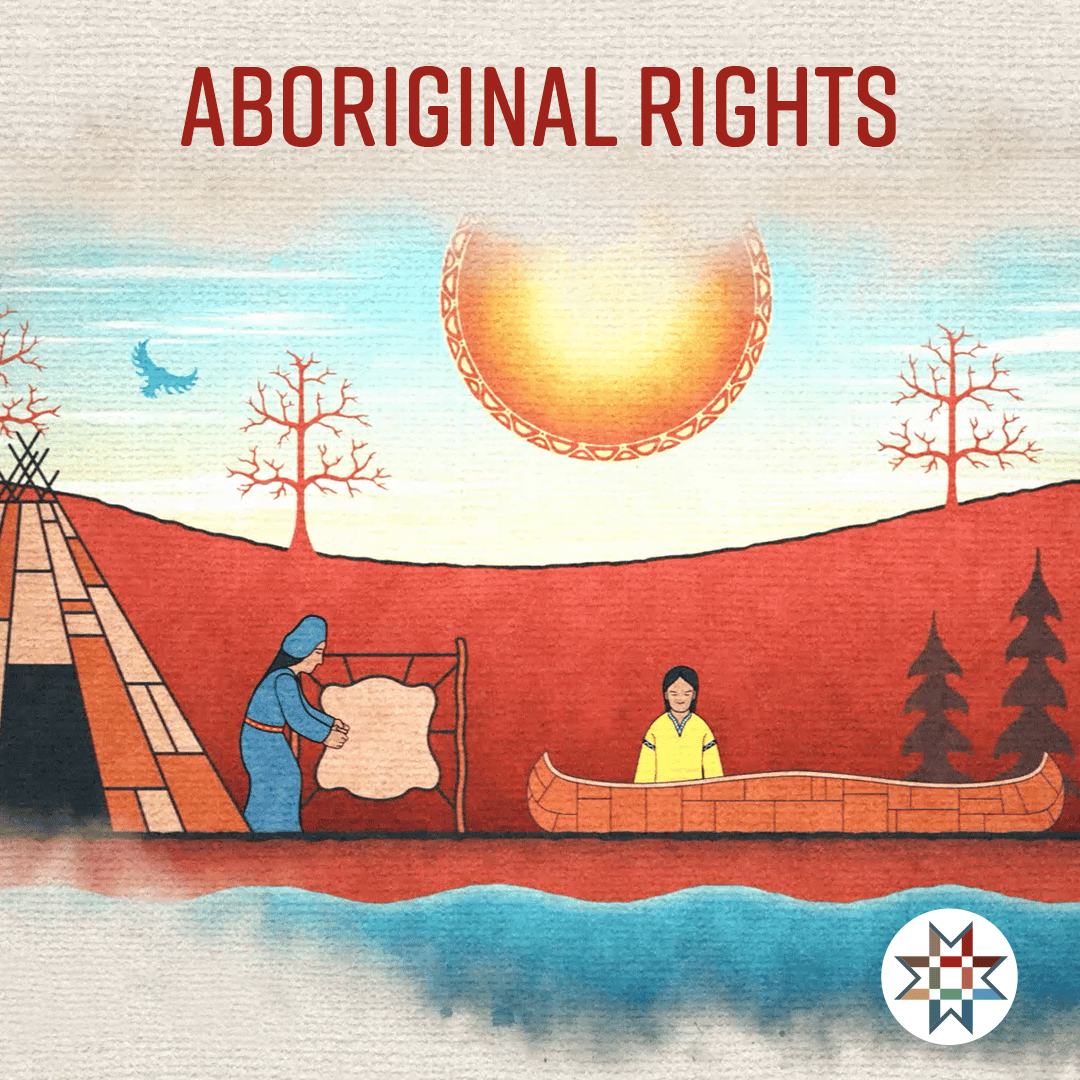
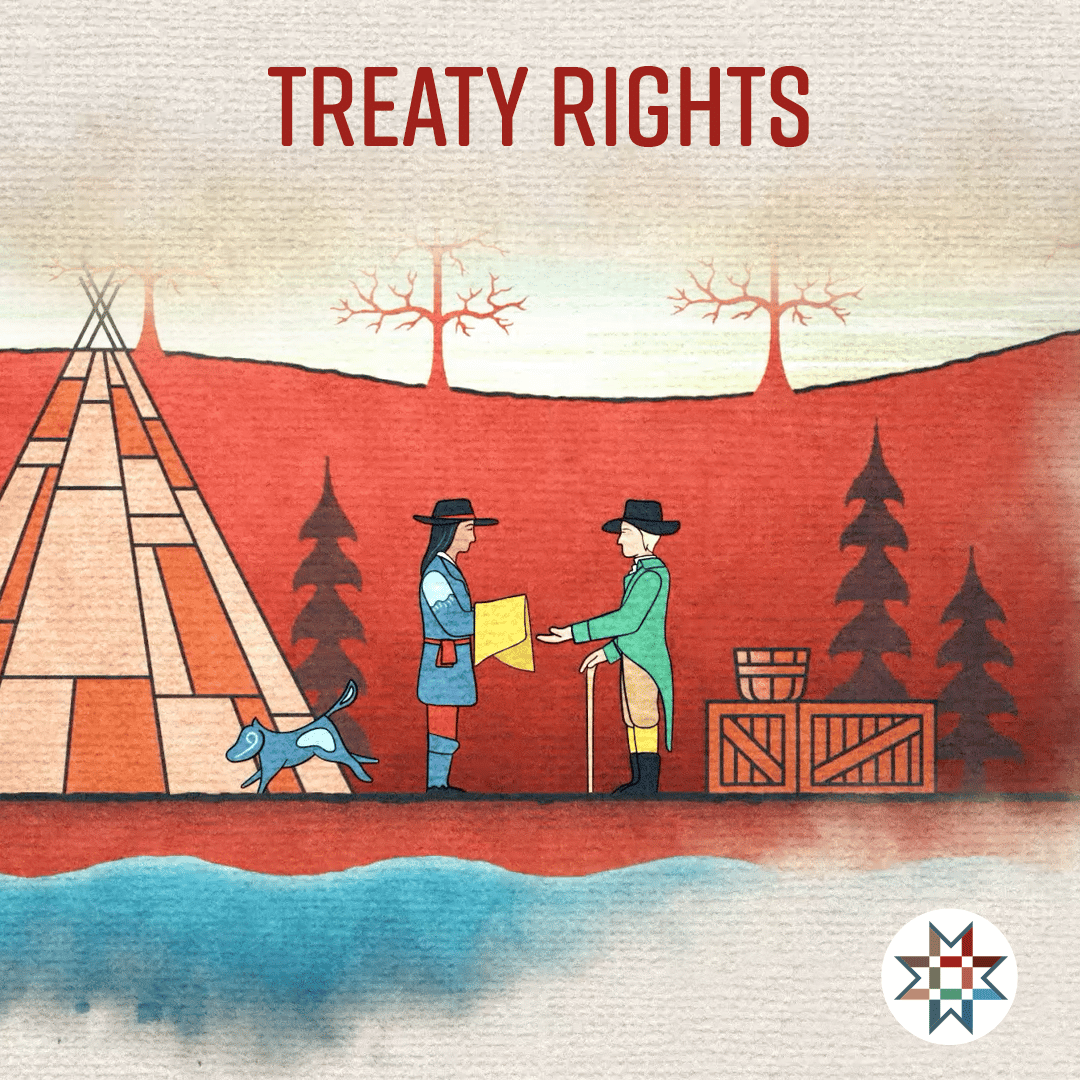
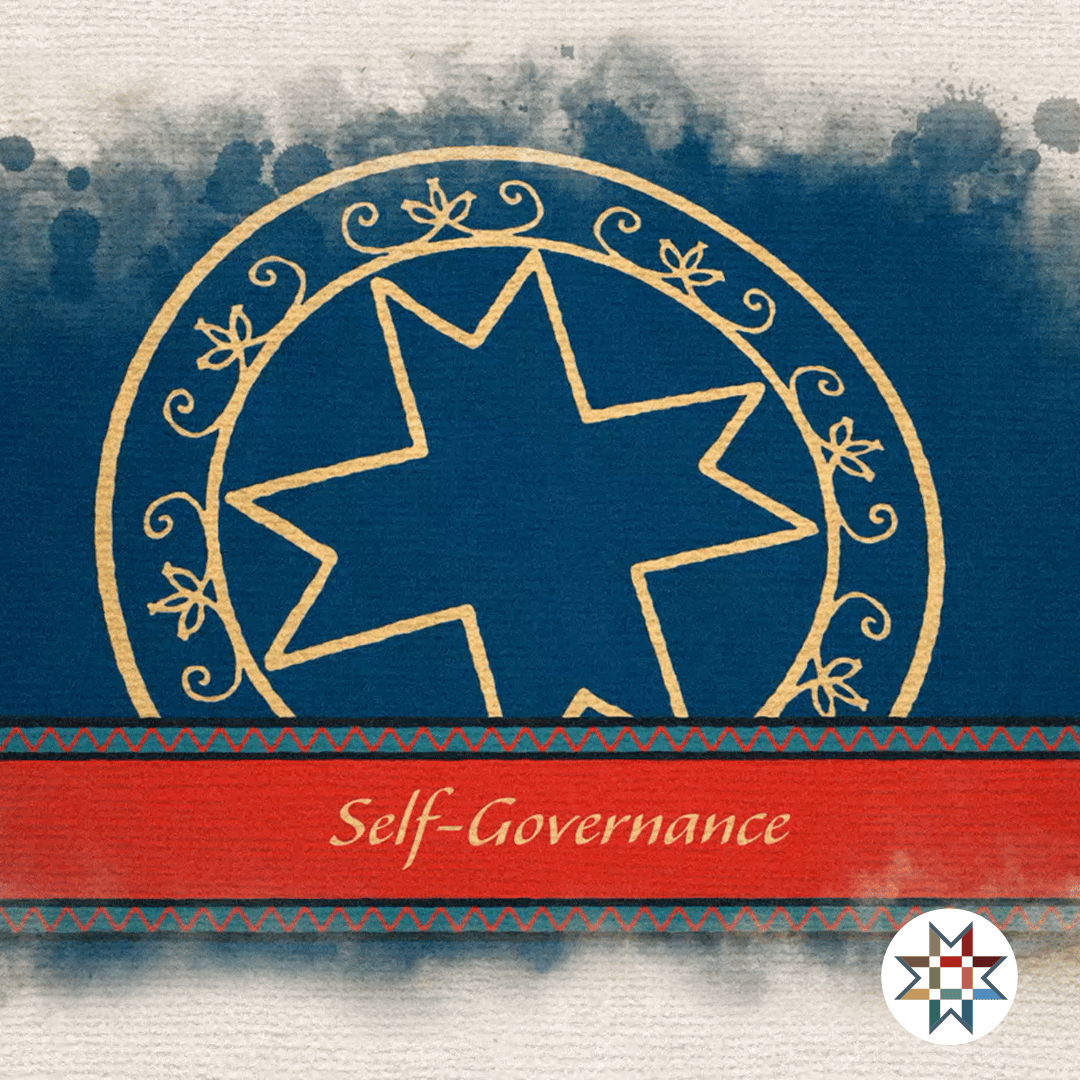
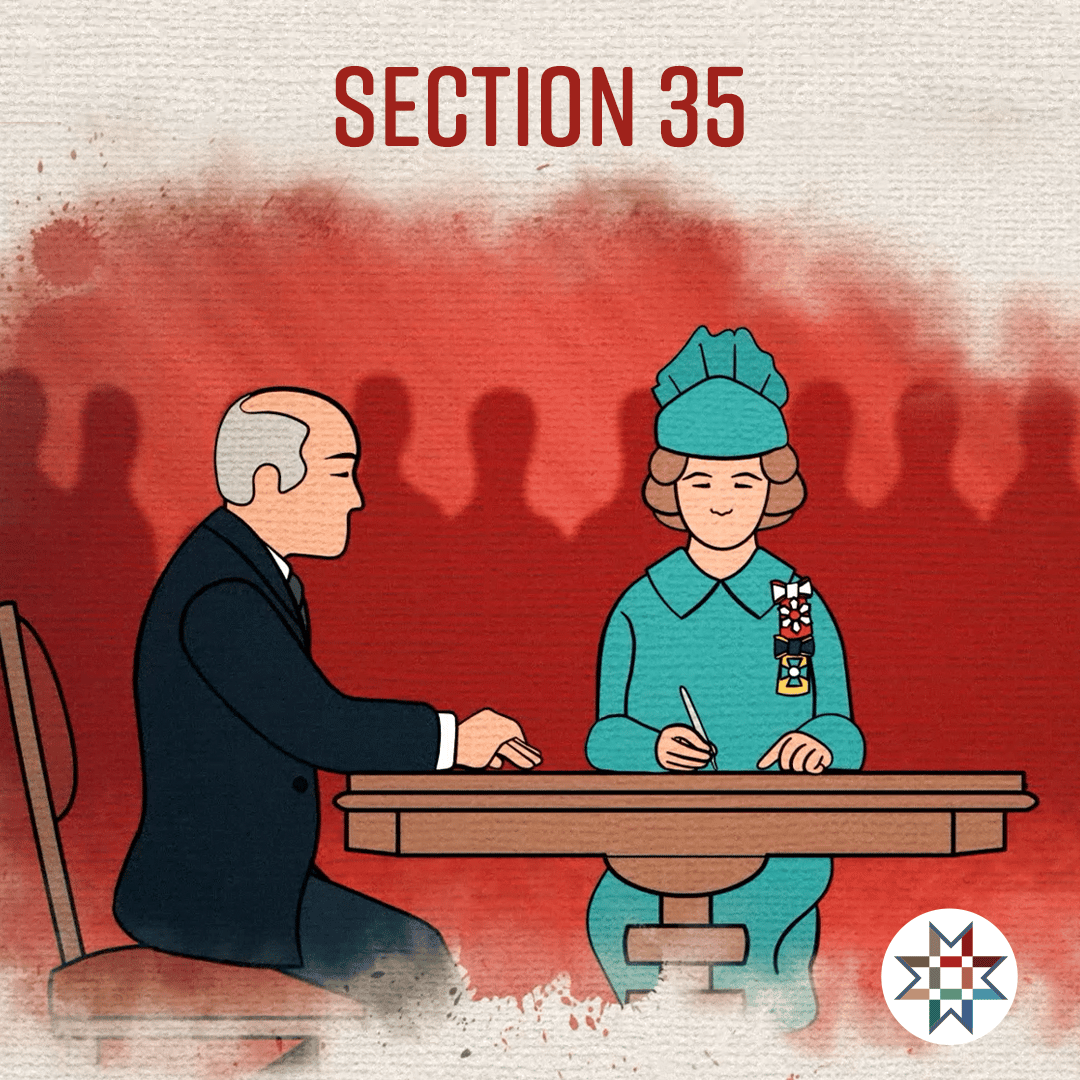

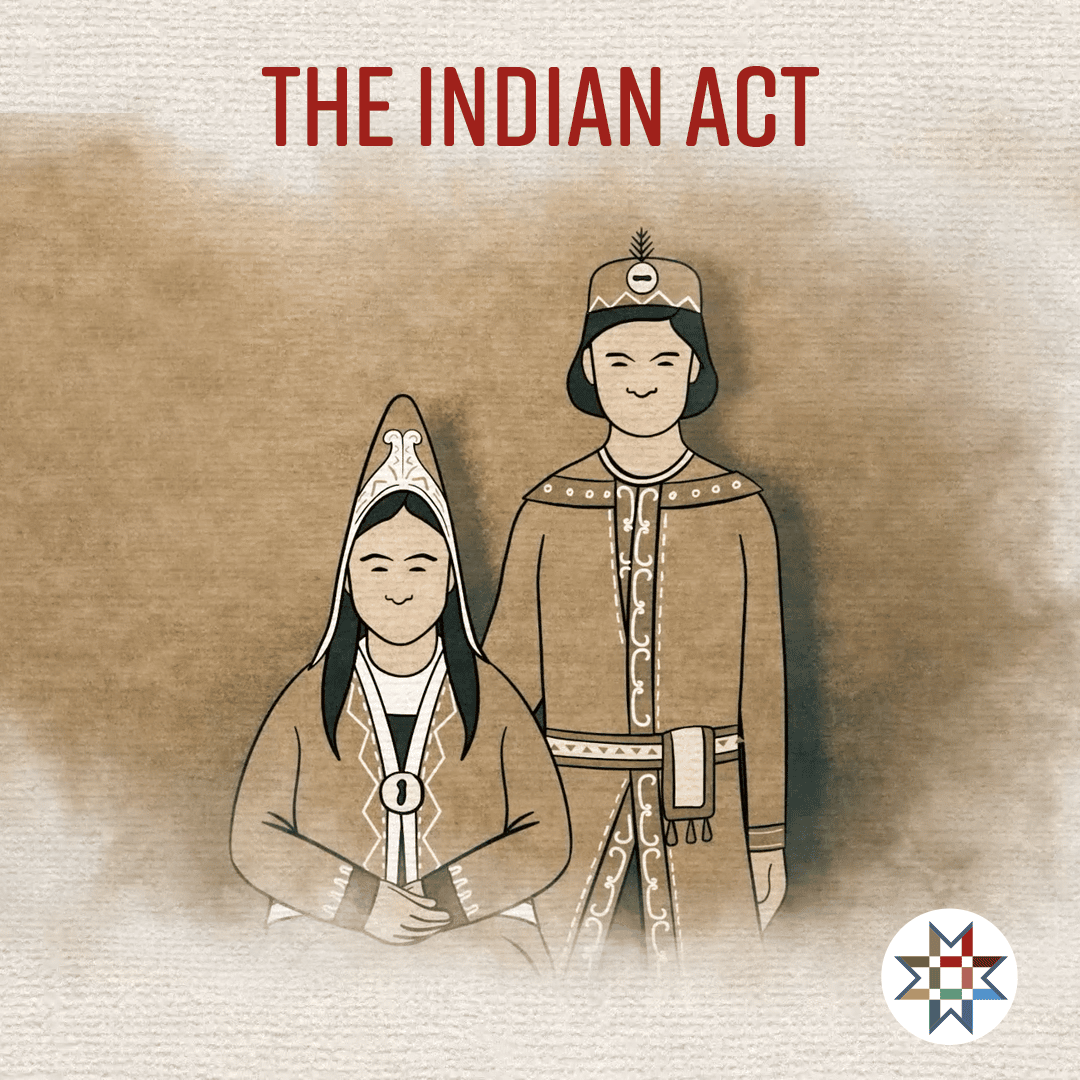
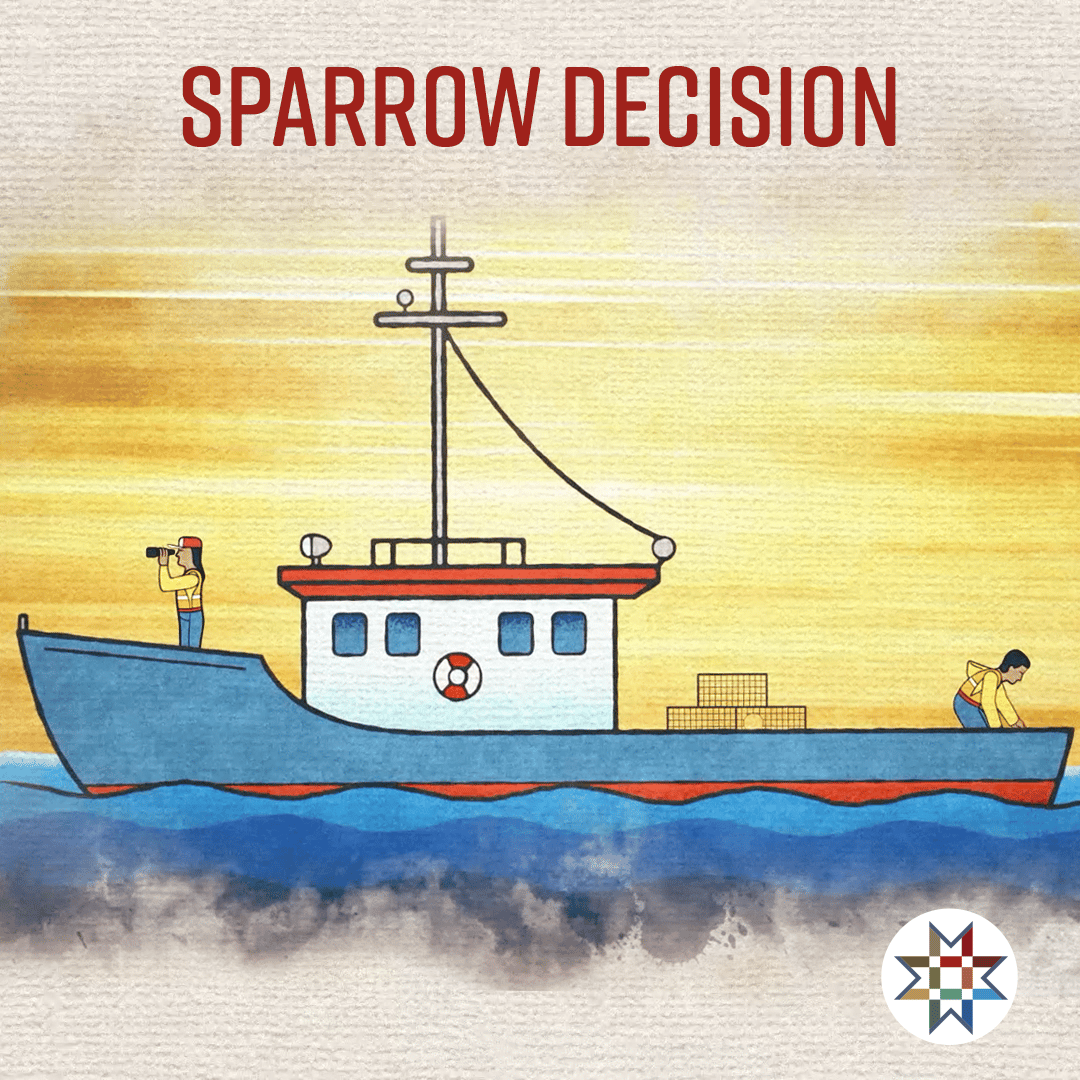
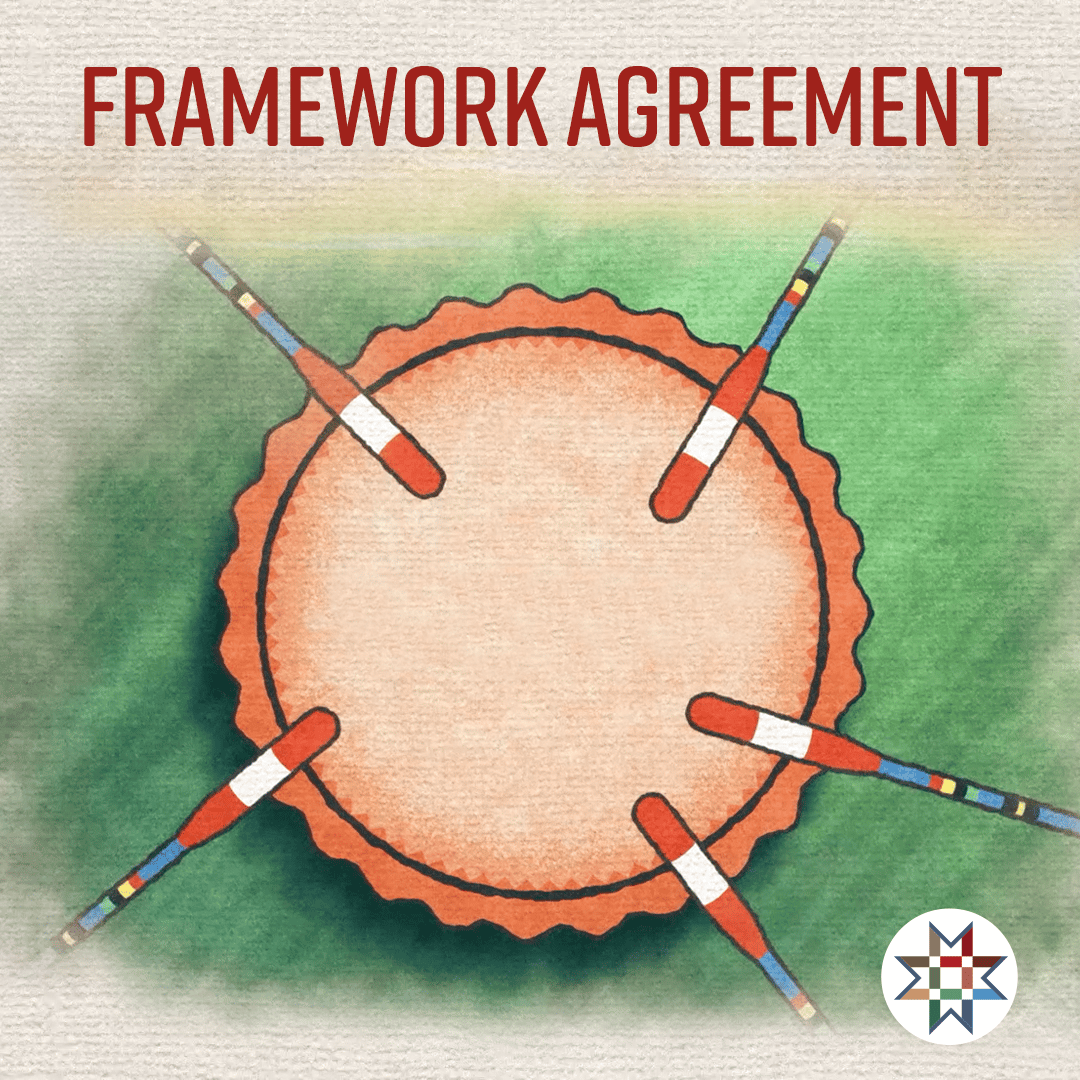
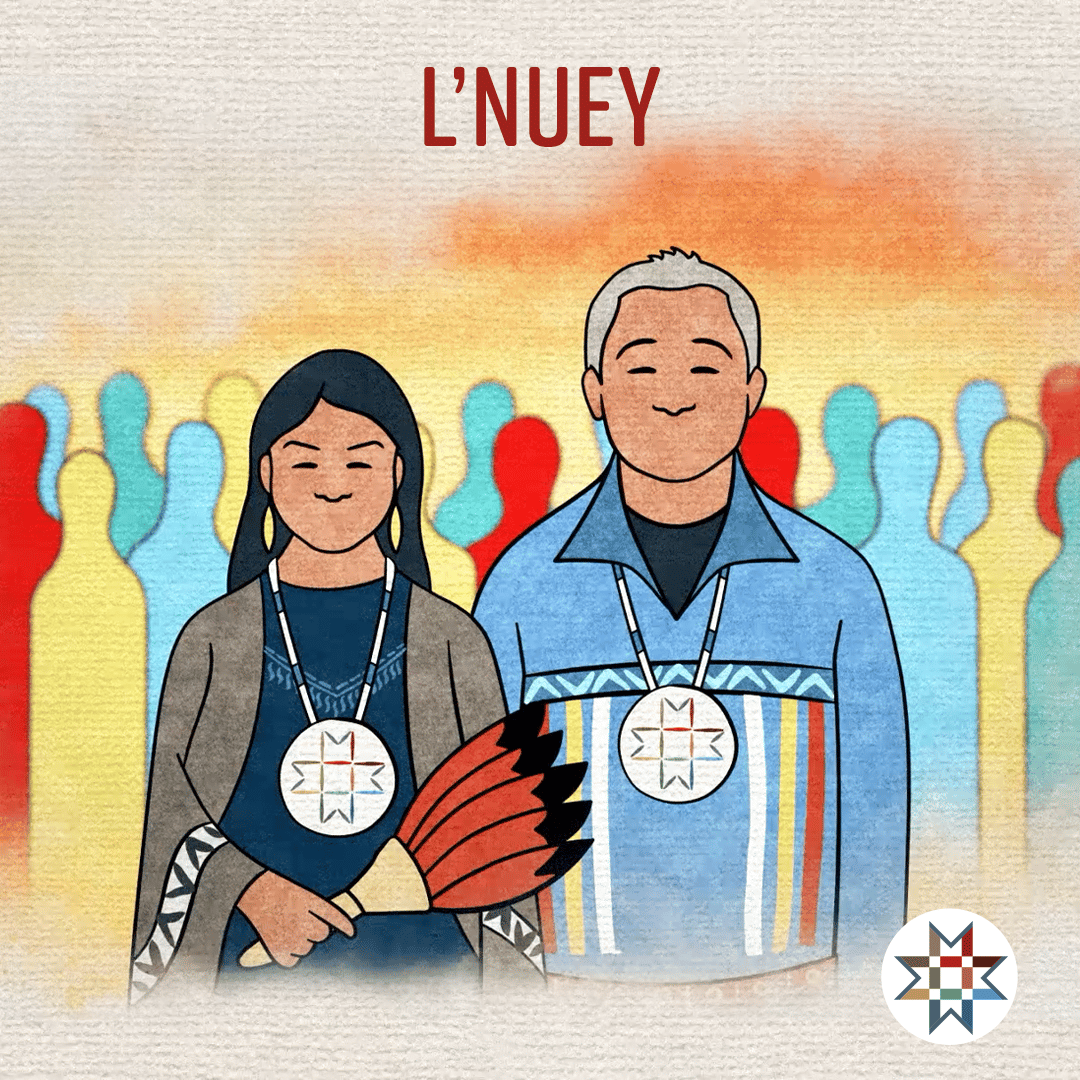
Special Thanks
About Loretta Gould
L’nuey was fortunate to once again collaborate with Mi’kmaq artist Loretta Gould in the creation and inspiration of images used in the Foundational Terms educational campaign. Loretta’s art is spiritual and her love of bright, beautiful colours is evident in her work, with images that tell a story of Mi’kmaq life and serve as historical snapshots. Her signature style lends itself beautifully to helping create awareness and understanding of the significance and meaning behind these important Mi’kmaq terms.
About Rebecca Thomas
L’nuey was thrilled to have Rebecca Thomas lend her incredible voice and talent to narrating the Foundational Terms video. A band member of Lennox Island First Nation, Rebecca is an award-winning Mi’kmaq poet and activist, who, in addition to being published in various journals and magazines, has also written a critically-acclaimed children’s book. As a passionate advocate for education and protection of Mi’kmaq Rights, she was a natural fit for this important initiative.


